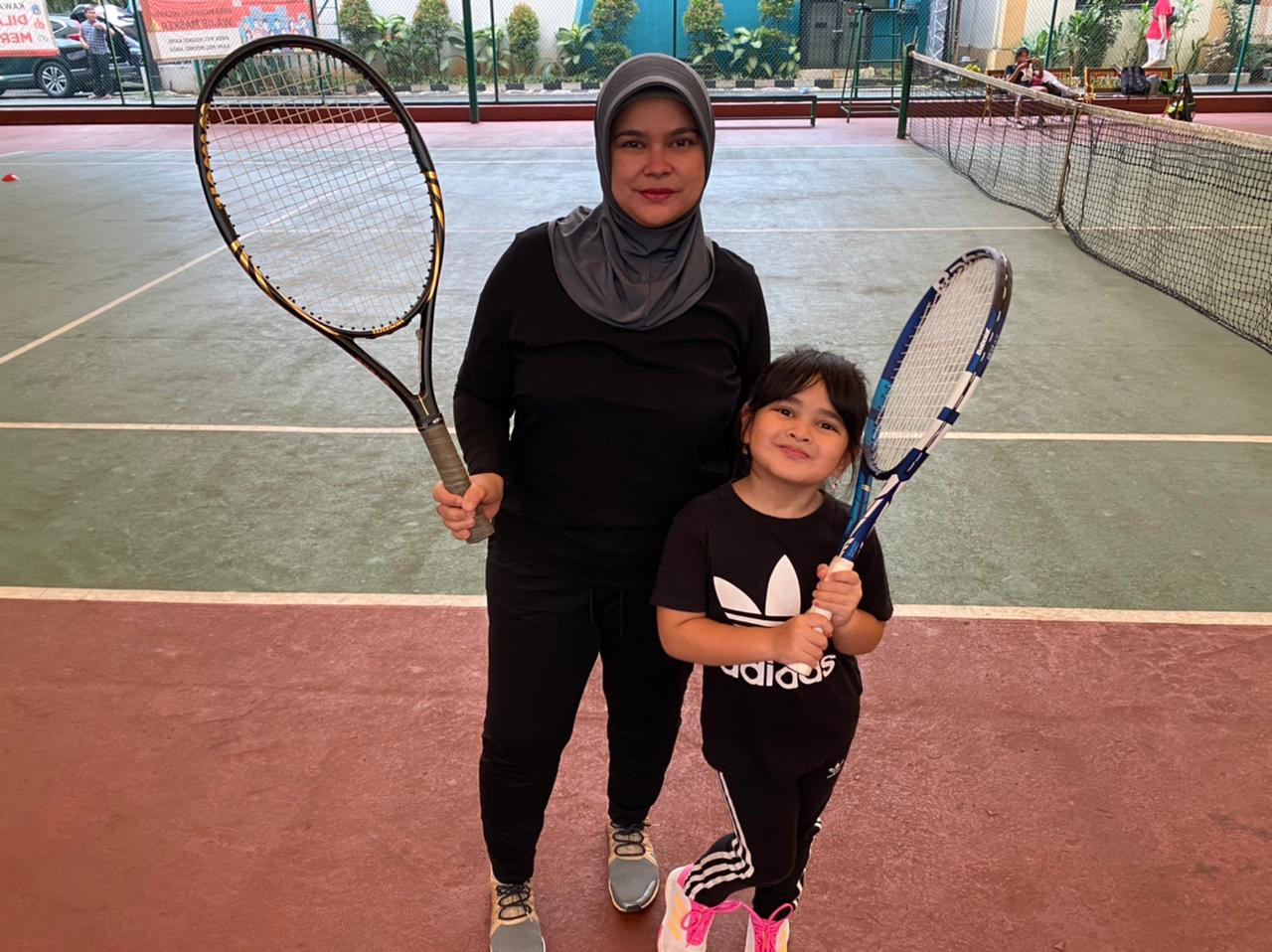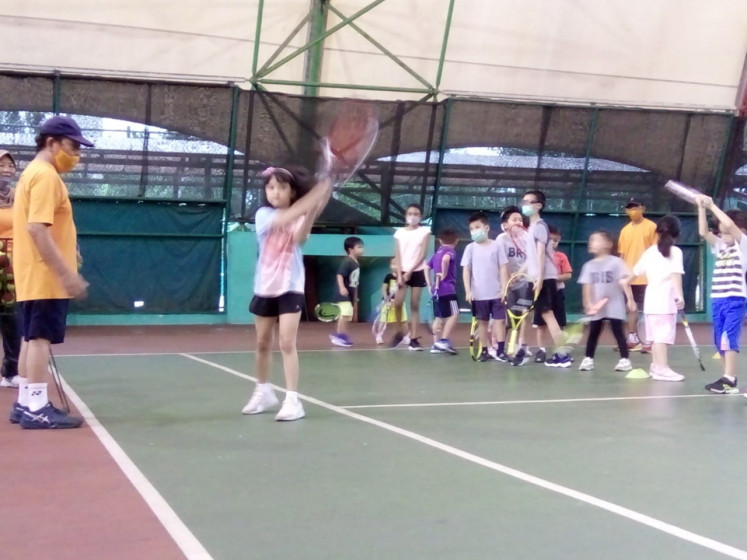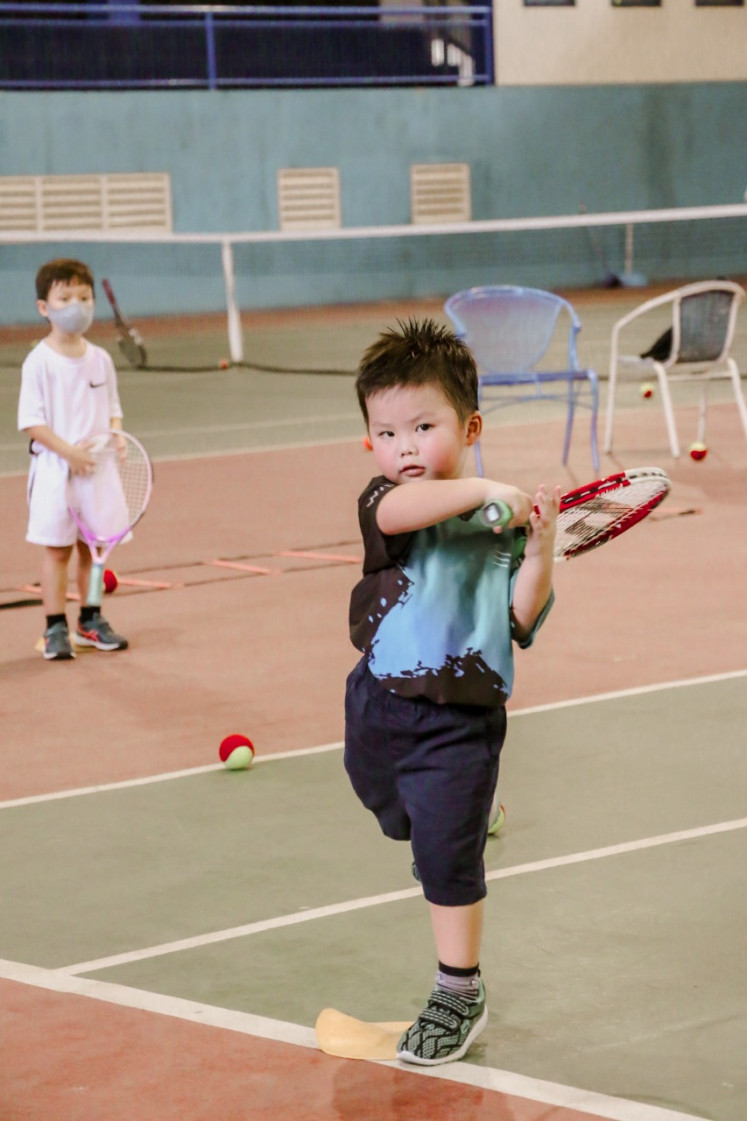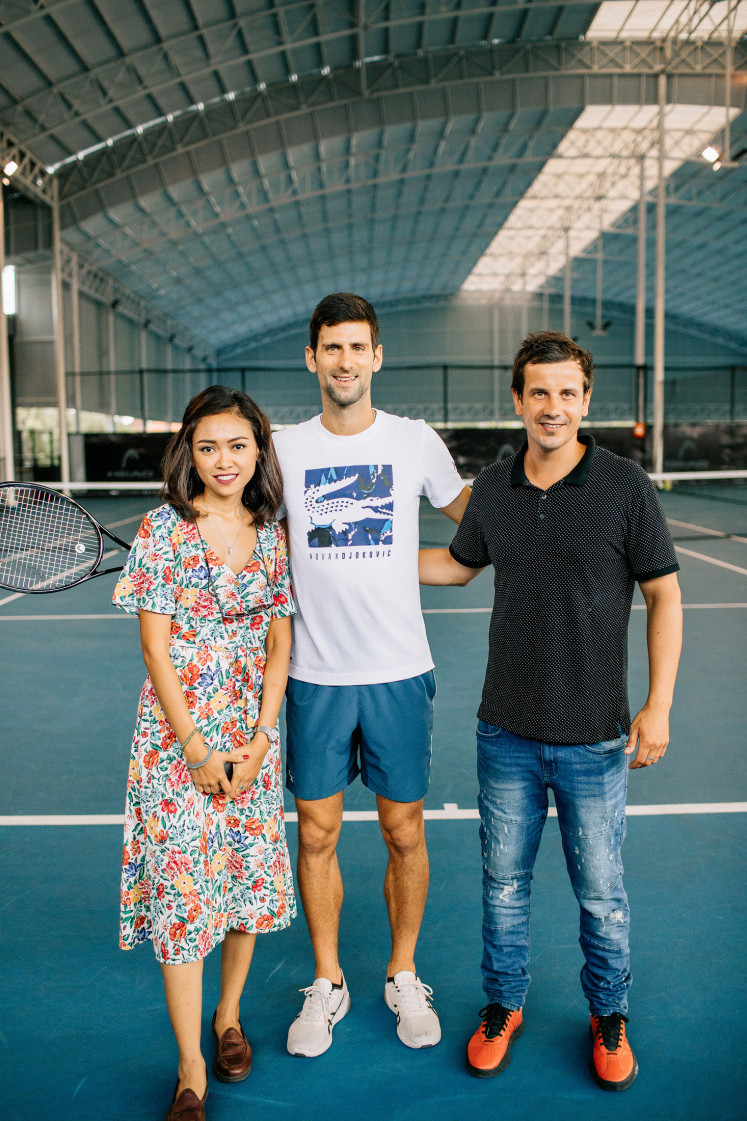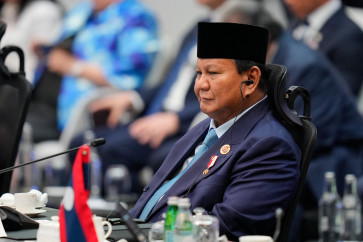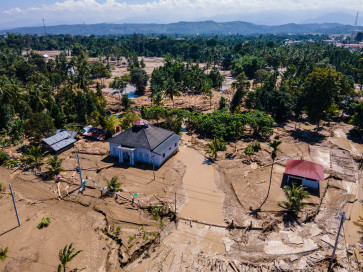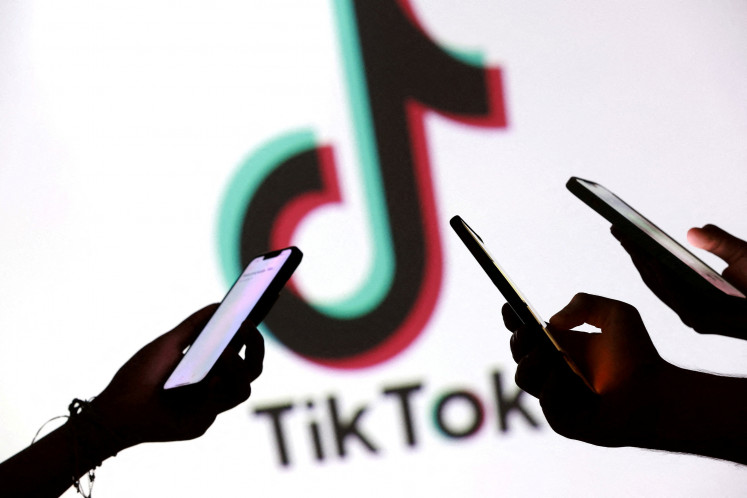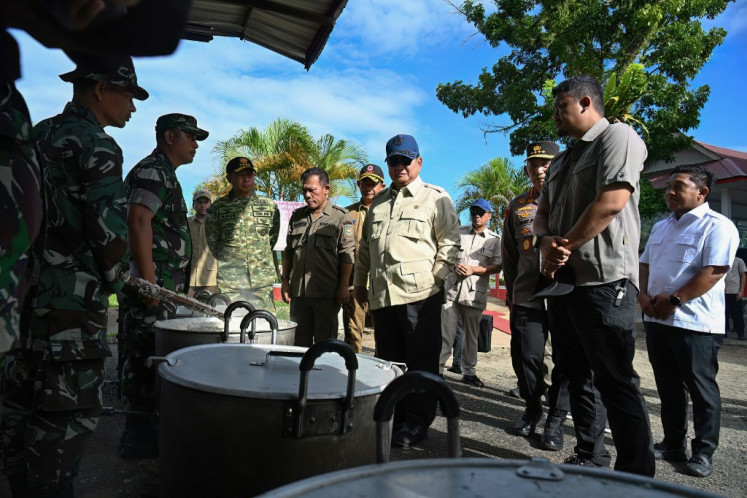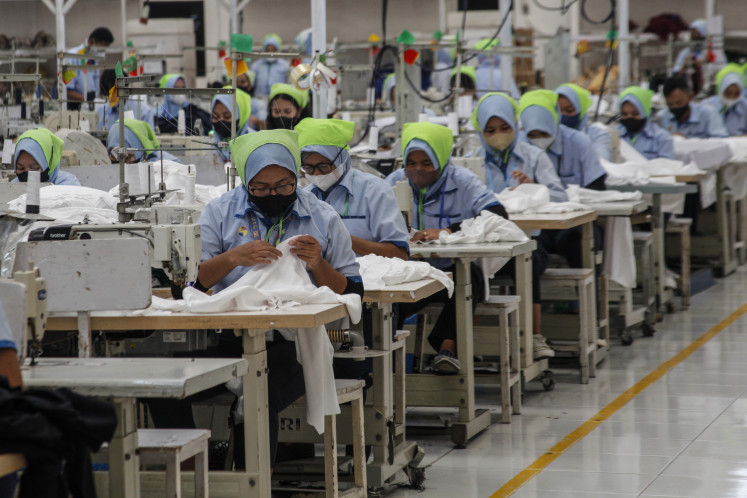Popular Reads
Top Results
Can't find what you're looking for?
View all search resultsPopular Reads
Top Results
Can't find what you're looking for?
View all search resultsIndonesian tennis scene surges in popularity amid pandemic
In Indonesia, tennis is arguably less popular than the other racket sport, badminton, in which the nation has won gold medals in several Olympics. Since the pandemic started, however, tennis, perceived as a sport that applies social distancing, has suddenly enjoyed newfound popularity among Indonesians.
Change text size
Gift Premium Articles
to Anyone
L
ike many kids, 6-year-old Callista Alisha Radhitia has spent her days mainly at home since the COVID-19 pandemic started last year. Her weekly schedule involves online learning from Monday to Friday, with classes starting at 8 a.m. and ending at 1 p.m. She also learns to read the Quran at home every Tuesday and Wednesday from 3 p.m. to 4 p.m.
Every afternoon on Mondays, Thursdays and Saturdays, Callista’s mother, Melina Syarief, 38, drives her daughter for the only physical exercise in her schedule: tennis lessons.
It has been four months since Callista, who idolizes Japanese tennis star Naomi Osaka, began her training. Melina admits that she is amused by her daughter’s affinity for the racket sport and if it was not for the pandemic Callista might never have stepped onto a court in the first place.
“At first, I doubted that my kid would be into tennis at all,” Melina told The Jakarta Post.
Callista was into gymnastics before switching to tennis in October 2020. The gymnastics classes were closed due to the pandemic and Melina was determined to find another sport to focus on. She then thought of tennis and believed the sport’s open-air nature would make it safer than other sports.
During her first lesson, Callista loved swinging the racket - much to Melina’s delight. Having tried tennis herself when she was in high school, Melina decided to take tennis lessons to accompany her daughter.
“Of course, we want to continue [tennis after the pandemic is over]. Especially since the coach says that Callista is talented,” she said, smiling.
Callista herself seems to enjoy being on the court under the tutelage of her coach, Sri Utaminingsih, 60, known as Utami, a former national player. Of her idol, Naomi Osaka, Callista shared her dreams with the Post.
“I want to be like her [Osaka] and I want to beat her,” said Callista.
She is not the only one.
Indonesia saw an increase of 1,426 players aged 12 and under in the first quarter of this year, according to PP PELTI, the country’s tennis association. This was more than half of the total number of junior players last year: 2,697.
PP PELTI also saw the number of local clubs that run tennis development programs rise from 38 clubs and academies in 2020 to 65 in the first quarter of 2021, up by 71 percent. The number of coaches in the first four months of this year also rose to 111 people, a 70 percent increase from a total of 65 coaches throughout 2020.
The association cites the findings from the Texas Medical Association, which ranked tennis as one of the least risky activities during the pandemic, as the reason why the sport became popular.
Utami, who coaches juniors at the Yayuk Basuki Tennis School on Jl. Hang Tuah X in Kebayoran Baru, South Jakarta, said that before the pandemic, children were usually more into sports such as futsal or soccer.
“From what I hear [from the parents], their kids experience boredom and need physical activity - and they feel that tennis is the safest sport for social and physical distancing,” said Utami.
“Many parents were surprised when they found out that their kids could hit the balls properly,” she added.
There are three courts at the academy and a total of six to eight students per court would be considered a big class before the pandemic. The pandemic has seen at least 10 kids sign up for a lesson on one court.
“Sometimes we can have a total of 30 students per day,” she said, adding that the school maintains safety protocols at all times.
Separately, former top Indonesian player, Wynne Prakusya, 40, who founded the West Tennis Academy at Permata Mediterania Club House on Jl. Raya Pos Pengumben in Srengseng, West Jakarta, with some of her colleagues, confirms the unexpected popularity of tennis.
“[The academy] has seen around a 30 percent increase of students [since March last year],” said Wynne, once ranked number 74 in the world, adding that the phenomenon has motivated her, even more, to produce more tennis players in the future.
Tennis star: Wynne Prakusya, pictured with her oldest son, Ethan Jake Frans, 9, and her youngest, Elwyn Jax Frans, 3. (JP/Courtesy of Wynne Prakusya)“It’s my dream to produce top Indonesian players,” said Wynne, whose sons, Ethan Jake Frans, 9, and Elwyn Jax Frans, 3, also love the sport.
Fendry, 42, enrolled his two children, Madeline, 9, and Matthew, 7, with the West Tennis Academy three years ago. He acknowledged that during the pandemic, his children became more enthusiastic about their tennis lessons.
“As a parent, I will fully support them if they wish to continue to the next level,” said Fendry, who constantly reminds his kids to wear masks outside the court and wash their hands regularly.
A lack of domestic competition and poor physical and mental strength, in addition to an absence of sponsors, are often blamed for the current state of Indonesian tennis.
Sporty kids: Wynne Prakusya's son Elwyn Jax Frans practices his tennis stroke. (JP/Courtesy of Wynne Prakusya)Since Angelique Widjaja reached the world’s number 55 in 2003, Indonesia has not seen any of its women players reach the top 100. On the men’s side, Christopher Rungkat reached number 241 in 2013, the highest-ever for any Indonesian male tennis player.
Yayuk Basuki, who peaked at number 19 in 1997, remains the highest-ranked Indonesian tennis player until now.
PP PELTI chairman, Rildo Ananda Anwar, said that the association expected the new crop of aspiring tennis players would continue playing the sport even after the pandemic is over.
“Naturally, we hope that there will be potential players that can excel in the future,” he said.
Recreational players
Tennis has not only become popular among the kids who have enrolled in tennis schools and dream of becoming world-class athletes in the future.
Rory Asyari, 34, a TV presenter and entrepreneur who plays recreational tennis regularly, has found that booking a tennis court has become more difficult during the pandemic – hence confirming its popularity.
"The distance between the tennis players and the dimensions of the court makes the sport the safest now. The amount of cardio burned [when playing tennis] is also the highest,” said Rory.
Utami said that the Yayuk Basuki Tennis School also saw adults begin private lessons for the first time, from parents to office workers and college students.
“Unfortunately, the number of courts is limited,” said Utami.
Sumardi, 33, a coach at Liga.Tennis Center & Academy in Umalas, Bali, said that the facility had seen more and more intermediate-level players since the pandemic started, which is good for competitiveness.
“Before that, we either had beginner players or advanced players. It was rare to find players who were in the middle [intermediate],” he said.
Liga.Tennis founder, Dmitry Shcherbakov, 37, who is from Ukraine, said around 3,580 tennis enthusiasts of all levels in Bali had signed up through its app, which allows players to book a court and find other players.
Dmitry Shcherbakov (right), his wife Ayunanda (left), and Serbian tennis star Novak Djokovic during the latter's visit to Liga.Tennis Center & Academy in Bali in December 2019. (Personal collection/Courtesy of Dmitry Shcherbakov)“The pandemic has brought into tennis many newcomers who would not be playing tennis otherwise. Especially during times when beaches were closed for a couple of months,” he said.

